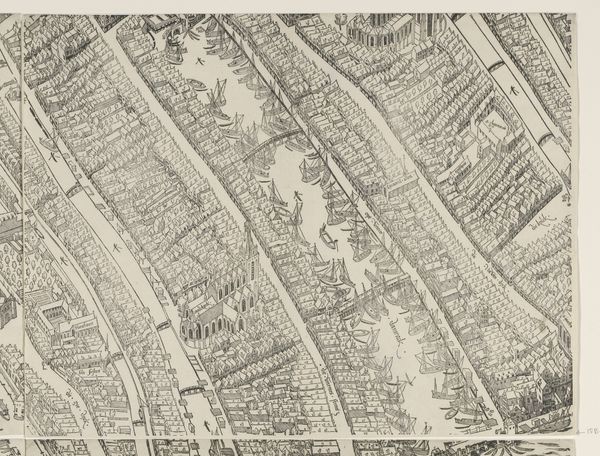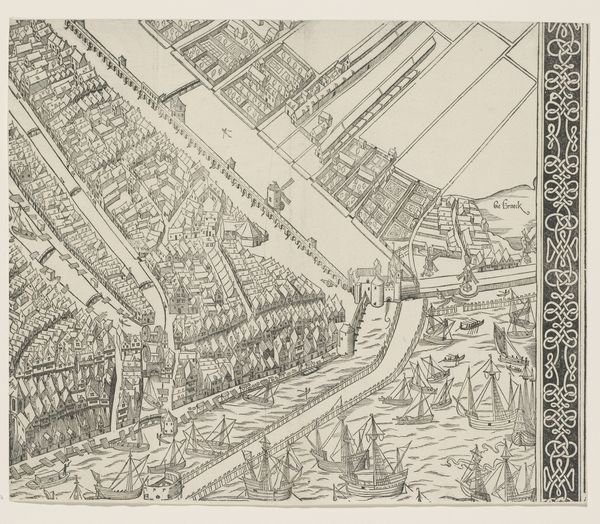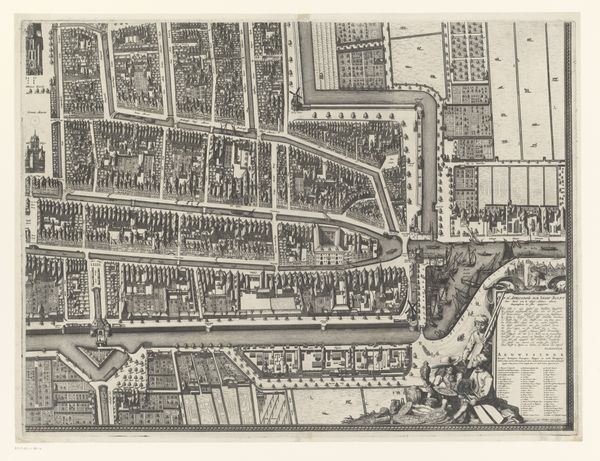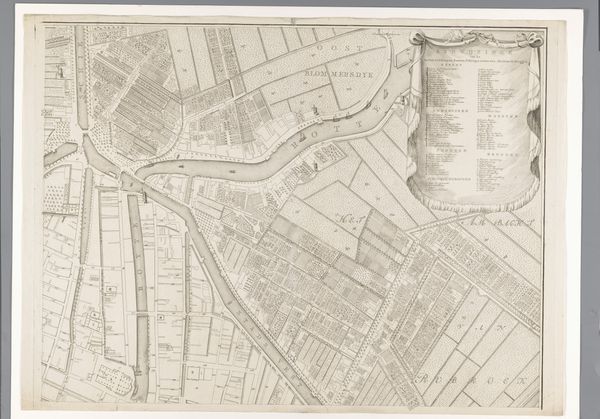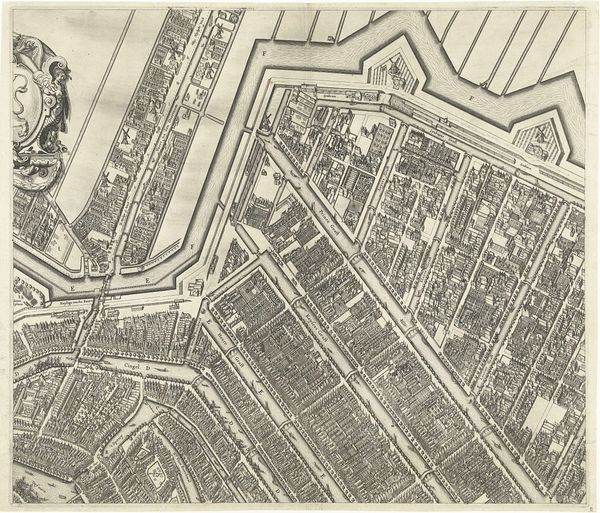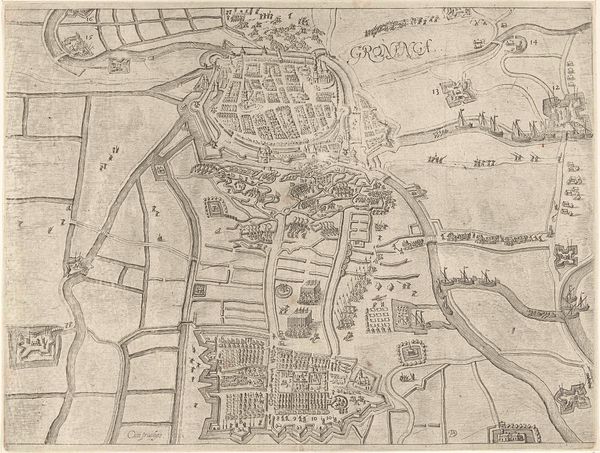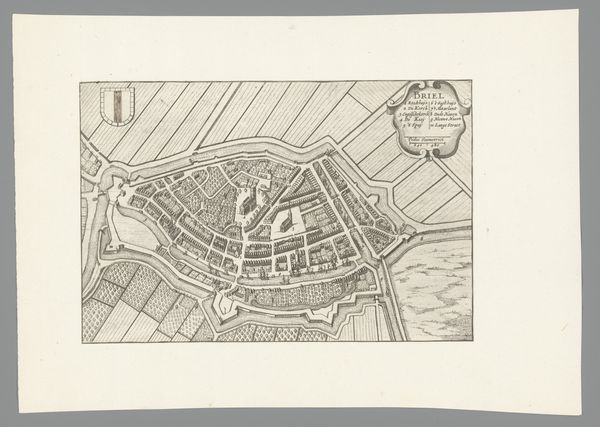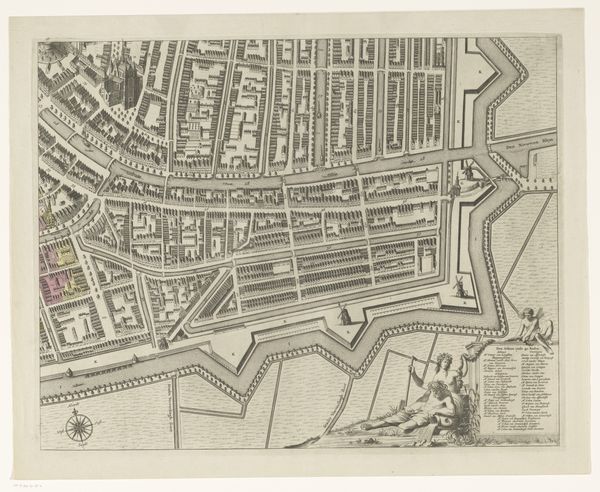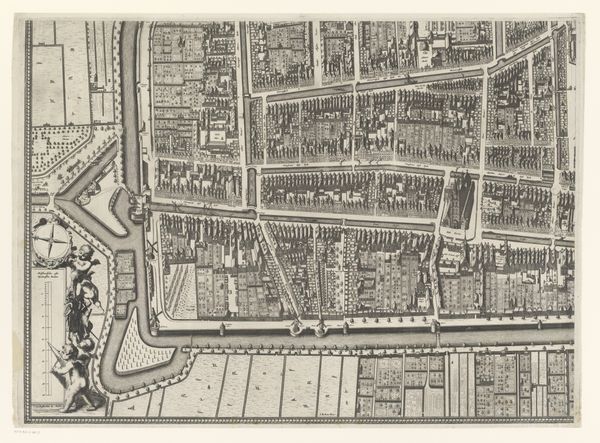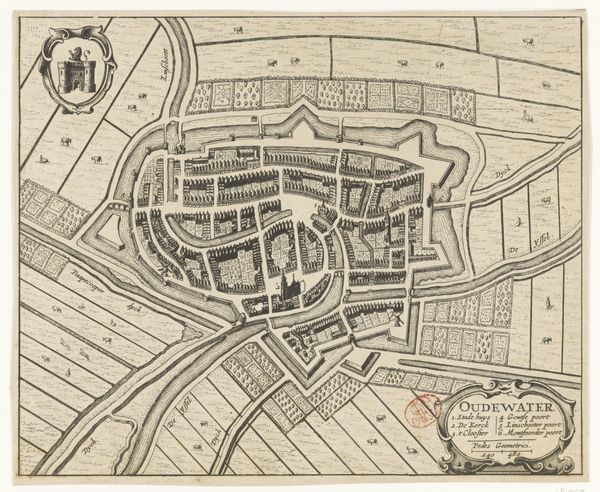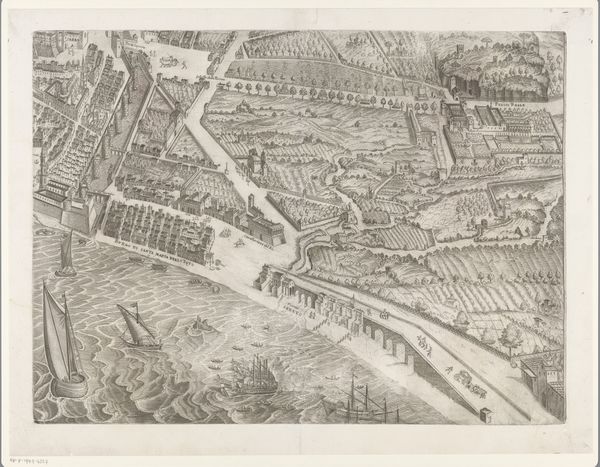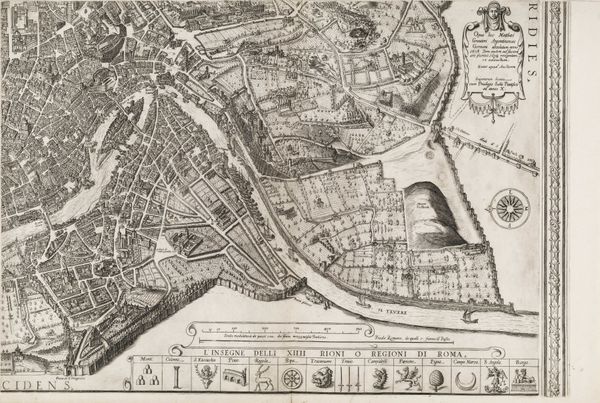
print, engraving
# print
#
old engraving style
#
ink line art
#
linework heavy
#
geometric
#
ancient-mediterranean
#
line
#
cityscape
#
engraving
Dimensions: height 297 mm, width 356 mm
Copyright: Rijks Museum: Open Domain
This is a section of a map of Amsterdam made in 1544 by Cornelis Anthonisz., made with an engraving on paper. The material of paper itself, commonly made from linen rags, emphasizes the city's dependence on the textile industry and its global trade routes. Paper was a precious commodity at this time, and would have involved soaking, pulping, and pressing to create. The engraved lines you see would have taken skill and time to execute. The mode of production here is tied to wider social issues, requiring an investment in human skills and material resources. The flat, two-dimensional representation allows for a bird's-eye view of the city, emphasizing its organized structure and expanding infrastructure. We see canals that facilitate trade, and the layout represents the city's order and control. This precision reflects a society increasingly structured around commercial interests, labor, and consumption. The map's materials, making, and context are crucial to understanding its full meaning, and how it challenges traditional distinctions between fine art and craft.
Comments
No comments
Be the first to comment and join the conversation on the ultimate creative platform.
